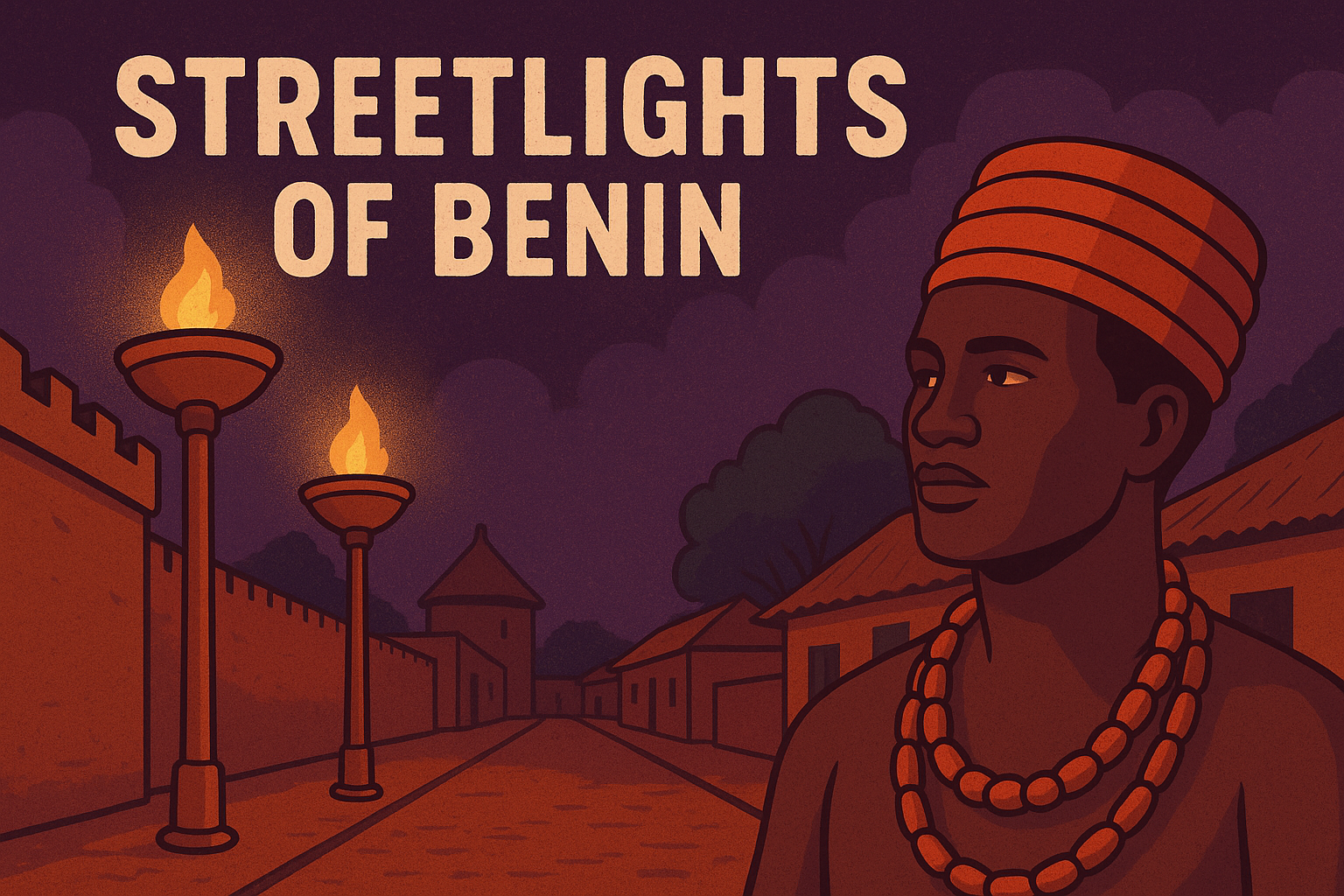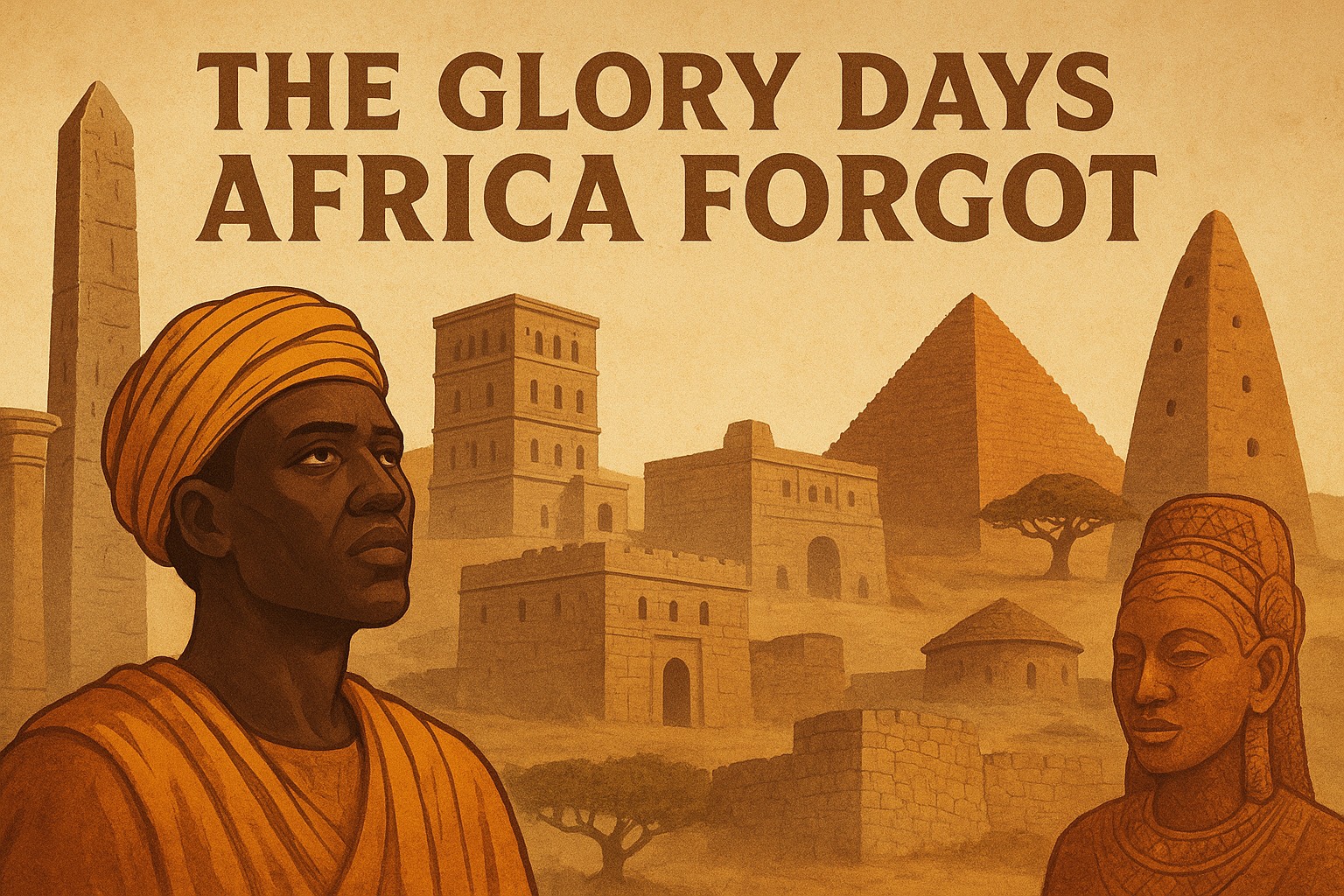The Streetlights of Benin: Africa Lit the Night before Europe

The Streetlights of Benin: Africa Lit the Night before Europe
Did you know the Benin Kingdom had streetlights centuries before Europe? Discover how palm Oil lamps lit up Benin City at night, proving Africa’s brilliance in history.
When you think about streetlights, you probably picture Paris, “the City of Lights,” or maybe London’s foggy cobblestones glowing in the Victorian night. Well, here’s the plot twist: the Benin Kingdom in West Africa had streetlights centuries before Europe even thought of them. Yes, while London was still tripping in the dark, Benin City was glowing with palm-oil lamps.
The Benin Kingdom and Its Bright Streets
The Benin Kingdom (in present-day Nigeria, not modern-day Benin Republic) was one of the most advanced civilisations in Africa between the 13th and 17th centuries.
This wasn’t just a kingdom with warriors and art, it was a city with serious urban planning, massive walls and earthworks (longer than the Great Wall of China), intricate bronze artistry that still amazes curators worldwide, and yes street lighting in Africa before Europe, powered by palm oil lamps, mounted on tall poles along the city’s main roads. European travellers who visited Benin in the 1400s and 1500s were stunned. They wrote about wide streets, neatly lined houses, and oil lamps that lit the night.
Did the Benin Kingdom Have Streetlights?
Yes! Historians and European records confirm that Benin City used palm oil lamps as a form of streetlight. These lamps were placed along major streets to make movement at night safer, show the wealth and order of the kingdom, and impress visitors (and oh boy, it worked). Yeah, imagine being a Portuguese trader in 1500, walking through Benin City lit at night, while your own home country hadn’t even figured that out yet.
When Did Europe Get Streetlights Compared to Africa?
Here’s where the story gets spicy.
• London didn’t introduce public street lighting until the 1600s.
• Paris only became the famous “City of Lights” in the 1700s.
• Meanwhile, the Benin Kingdom had streetlights centuries earlier, shining bright with palm oil lamps.
So the next time someone claims Africa was “in darkness,” remind them that our ancestors were ahead of the curve and ahead of the light bulb.
African Technology before Colonialism
The story of Benin’s streetlights is more than just a fun fact. It’s proof that precolonial African technology was thriving. From city planning to art, from metallurgy to urban infrastructure, African civilisations were building, innovating, and leading long before colonial powers arrived. But colonial narratives flipped the script, selling the lie that Africa had nothing until Europe showed up. The truth? Our ancestors lit the night before Europe even knew how.
Why This Legacy Matters
If you visit Benin City today, you won’t find the palm oil streetlights anymore. Colonialism disrupted systems, dismantled greatness, and left us chasing “modern development” that often ignores our heritage.
But history remembers. And we should too.
At CYSTADS, we’re keeping these stories alive. Because when you know your people built civilisations that shone brighter than their colonisers, you don’t just learn, you walk differently, dream differently, and build differently.
Key Takeaways
• The Benin Kingdom's streetlights came centuries before Europe’s.
• Palm oil lamps lit up the main streets of Benin City.
• European travellers recorded their amazement at this system.
• Africa wasn’t “behind”; it was leading the way.
At CYSTADS, we’re not just telling stories, we’re reclaiming African history. Join the movement, contribute your knowledge, and let’s make sure the world knows that Africa was never in darkness. To join, click here!


